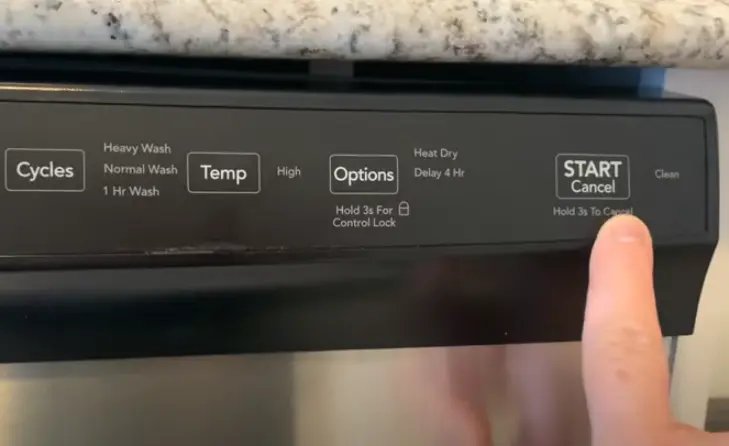
Error codes in appliances are like your car’s check engine light—they signal that something’s not quite right. The Frigidaire dishwasher error code “OE” indicates a problem with the machine’s water drainage. When things aren’t draining properly, the machine can’t do its job effectively, leading to a backup. This can be frustrating, but the underlying issues are usually straightforward to troubleshoot. Let’s dive into what might be causing your dishwasher to flash this error and how you can tackle it.
Understanding the “OE” Error Code
When your dishwasher doesn’t drain properly, it sends this “OE” error as a cry for help. Imagine trying to wash dishes in a clogged sink—pretty ineffective, right? Similarly, when water can’t exit the dishwasher, it compromises the cleaning process. The error code exists to protect the dishwasher from potential damage due to flooding or water overflow. It’s essential to pay attention to these warnings to prevent further issues.
You might be wondering why water drainage is so crucial. Well, during its cycles, the dishwasher needs to rid itself of dirty water to introduce fresh water for rinsing. If the old water remains, not only are dishes not getting cleaned, but there’s also a risk of unpleasant odors or mildew forming. Addressing the OE code is about maintaining your appliance’s efficiency and ensuring your dishes are truly clean.
What’s crucial here is understanding that while the error code seems technical, the reasons behind it could be pretty straightforward. Most common sources involve blockages or a failing component in the dishwasher’s drainage system. Armed with this knowledge, you’ll be better prepared to delve into potential fixes.
Blocked Drain Hose
One of the most common culprits behind the OE error is a blocked drain hose. Picture the drain hose as the dishwasher’s own esophagus. If something gets stuck in there, the water simply can’t flow out. Over time, food particles, soap residue, or even small utensils can accidentally find their way into this hose, causing a blockage.
Checking the hose involves pulling your dishwasher out gently to access the back. Carefully feel along the hose for any obstructions or kinks that might prevent water from draining correctly. You might also need to disconnect the hose from both the dishwasher and the sink or drainpipe to ensure it’s clear. It might seem fiddly, but tackling this issue can often resolve the OE error without involving a technician.
Once you’ve ensured the hose is clear, reattach it firmly and give it another whirl. If the error persists, don’t lose hope! There are still other areas to investigate. Remember, this is a process of elimination, and patience is key.
Clogged Filter or Sump
Another frequent source of drainage problems is a clogged filter or sump. Think of these components as the dishwasher’s bouncers, keeping the wrong things—like stray bits of food or debris—from getting into the inner workings of the machine. Over time, though, they can become overwhelmed and blocked themselves.
To check this, start by removing the bottom dish rack. You should see a filter at the base of the dishwasher. Remove this gently (consult your manual if needed) and give it a thorough rinse under warm water to dislodge any stubborn debris. If you’re feeling up to it, inspect the sump area, which may also gather gunk. A clean filter and sump can make a world of difference.
After giving these parts a good clean, reassemble everything and run a rinse cycle. Often, simply clearing this area can resolve the drainage problems that trigger the OE error. If the alert sounds again, there might be another issue at play, so let’s keep digging.
Faulty Drain Pump
If your dishwasher’s still grumbling about drainage, the issue might be with the drain pump. The drain pump acts like a heart, pushing water out of the dishwasher. If it’s weak or not working, water pools at the bottom, and voilà, you have an OE error. It’s a bit more of a challenge to inspect compared to the hose or filter, but it’s entirely possible.
To check this, you’ll likely need to tilt the dishwasher back and look underneath. Ensure the power is off before you start poking around. Drain pumps can suffer from mechanical failure or blockages—look for obvious signs like leaks or broken pieces. If you’re unsure what you’re looking at, this might be a good time to consult a professional or refer back to the user manual.
If the pump is the issue, you may need a replacement. A faulty pump doesn’t mean your dishwasher’s destined for the scrapyard; instead, it’s an opportunity to replace a part and extend the life of the machine. Consider calling in a pro if you’re out of your comfort zone, as this repair can be a bit complex.
Preventing Future OE Errors
Now that you’ve tackled the OE error, let’s talk prevention. Just like exercising keeps your heart healthy, regular maintenance ensures your dishwasher remains in tip-top shape. Regularly cleaning the filter and checking the hose for blockages can prevent these issues from cropping up again. Getting into a routine where you scrape off food residues from dishes before loading them in helps tremendously too.
Additionally, consider running a cleaning cycle with a dishwasher-specific cleaner every month. This helps remove any lingering buildup inside the machine, ensuring everything runs smoothly. Just like you’d schedule a car service, these small maintenance tasks can prevent larger issues later on.
And there you have it! Understanding and fixing the Frigidaire dishwasher error code OE isn’t as daunting as it first appears. With a bit of patience and elbow grease, you can keep your dishwasher running smoothly, saving both time and money. Now, go forth and triumph over that appliance hiccup!